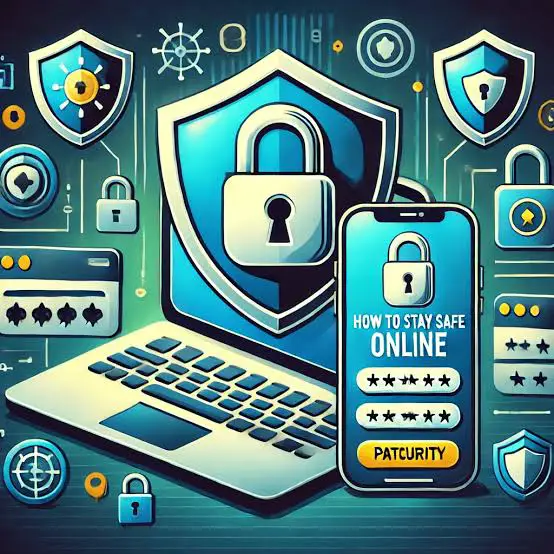How to Stay Safe from Phishing Attacks in 2025: Phishing attacks once limited to poorly written emails and suspicious links have become one of the most sophisticated cyber threats in 2025. With advancements in artificial intelligence and social engineering tactics, phishing has evolved into a potent tool for cybercriminals, targeting individuals, businesses, and even governments. The stakes are higher, and so is the need for vigilance.

This guide provides updated, practical strategies to recognize and protect yourself from phishing in today’s digital landscape.
What Is Phishing in 2025?
Phishing is a cyberattack where criminals pose as legitimate entities like banks, colleagues, or service providers to trick victims into giving up sensitive data such as login credentials, credit card numbers, or personal information.
Evolved Phishing Techniques in 2025:
- AI-generated emails and messages that mimic writing styles, tone, and formatting of known contacts.
- Deepfake voice and video phishing, impersonating CEOs or family members.
- Phishing-as-a-Service (PhaaS) kits available on the dark web, enabling low-skill hackers to launch attacks.
- QR code phishing (quishing), where malicious QR codes lead to credential theft or malware.
- Spear-phishing with hyper-personalized attacks based on social media activity and professional data.
Top Tips to Stay Safe from Phishing Attacks in 2025
1. Verify Before You Click
Even if a message looks legitimate, verify the sender. Check:
- The domain name (e.g.,
@banking.comvs.@banklng.com) - Spelling inconsistencies
- Unexpected attachments or requests
Use hover preview to check URLs without clicking. On mobile, long-press links to preview safely.
2. Use Multi-Factor Authentication (MFA)
Even if your credentials are stolen, MFA adds an extra layer of security. Use:
- Biometric verification (fingerprint or face scan)
- Hardware keys (like YubiKey)
- Authentication apps (not SMS, which can be spoofed)
MFA can prevent unauthorized access even if a password is compromised.
3. Educate Yourself and Your Team
Regular training helps individuals and organizations recognize phishing attempts. Use:
- Simulated phishing tests
- Awareness campaigns
- Security certifications for employees
In 2025, cybersecurity awareness is a basic digital skill.
4. Use AI-Based Email Filters
Modern email clients (like Gmail, Outlook, ProtonMail) now use AI-driven phishing detection. Enable all available filters and spam protection settings.
Some advanced security suites can:
- Analyze message tone and intent
- Block suspicious senders automatically
- Detect hidden redirects or shortened URLs
5. Check for HTTPS and Domain Spoofing
Never enter information on sites that lack HTTPS (SSL encryption). Also:
- Check if the domain name is a homograph (e.g., using “а” from Cyrillic instead of “a”).
- Look for padlock icons in browsers—but know that even phishing sites can fake this, so still verify URLs.
6. Beware of Urgency and Fear Tactics
Messages claiming “Account Suspended!” or “Payment Failed!” are often phishing attempts. Slow down and:
- Go directly to the company website
- Call a verified support number
- Avoid acting on emotional impulse
Legitimate organizations don’t rush users into taking action.
7. Keep Software and Devices Updated
Security patches often close vulnerabilities that hackers exploit. Enable automatic updates on:
- Browsers
- Operating systems (Windows, macOS, iOS, Android)
- Antivirus and security apps
Phishing attacks often combine social engineering with malware—patching helps block the latter.
8. Use Password Managers
Password managers:
- Detect fake login pages
- Autofill credentials only on legitimate websites
- Encourage strong, unique passwords
In 2025, password managers are more secure and intelligent, offering breach alerts and security ratings.
9. Don’t Trust QR Codes Blindly
Quishing has risen dramatically. Before scanning a QR code:
- Check the source (e.g., did it come from a verified organization?)
- Use a QR scanner with link preview and security checks
- Don’t scan QR codes from printed flyers, parking meters, or public signs unless verified
10. Report and Share
If you receive a phishing attempt:
- Report it to your email provider or organization’s IT/security team
- Use national or local cybercrime reporting portals (e.g., reportphishing.gov)
- Inform others to prevent spread, especially in businesses and family groups
Phishing campaigns often reuse templates; early reporting can stop broader attacks.
Red Flags of a Phishing Attempt
- Misspelled domain names
- Generic greetings like “Dear Customer”
- Requests for personal information
- Suspicious attachments or links
- Offers that are too good to be true
- Urgent or threatening language
- Unexpected invoice or delivery notifications
READ ALSO: How to Choose the Best Antivirus Software for 2025
Real-World Example (2025 Scenario)
Case Study: AI Deepfake Phishing at a Tech Firm
In early 2025, a mid-size tech company was targeted with a deepfake video conference. An attacker used a synthetic video of the company’s CFO to ask the finance department to transfer $200,000 to a “client.” Employees were convinced by the realistic facial gestures and voice.
The fraud was discovered only after the real CFO returned from vacation.
Lesson: Always verify large financial or sensitive requests using a second channel, such as a phone call or face-to-face meeting.
FAQs
What’s the most common form of phishing in 2025?
The most common types are AI-generated spear phishing emails, followed by QR-based phishing and social media impersonations.
Are mobile users more vulnerable?
Yes. Mobile phishing is rising due to smaller screens (making it harder to detect fake URLs) and high dependence on messaging apps. Use mobile security apps with phishing detection.
How do phishing emails bypass spam filters?
Attackers use:
- AI to mimic legitimate email patterns
- Fresh domains not yet flagged
- Encrypted or obfuscated payloads
Modern AI-based security solutions help catch these, but user awareness remains vital.
Can antivirus stop phishing?
Antivirus can block malicious downloads and flag phishing sites, but it doesn’t always catch deceptive links. A layered approach—including antivirus, MFA, user education, and cautious behavior—is best.
What should I do if I clicked a phishing link?
Immediately:
- Disconnect from the internet (if malware may be involved).
- Run a full device scan.
- Change your passwords (from a different device).
- Contact your bank if financial info was entered.
- Enable MFA on compromised accounts.
Are social media phishing attacks common?
Extremely. Phishing via LinkedIn, WhatsApp, Instagram, and even Slack is common in 2025. Always verify profiles and links before engaging.
Can phishing lead to identity theft?
Yes. Many phishing scams are designed to steal personally identifiable information (PII), which can be used for credit fraud, impersonation, or blackmail.
